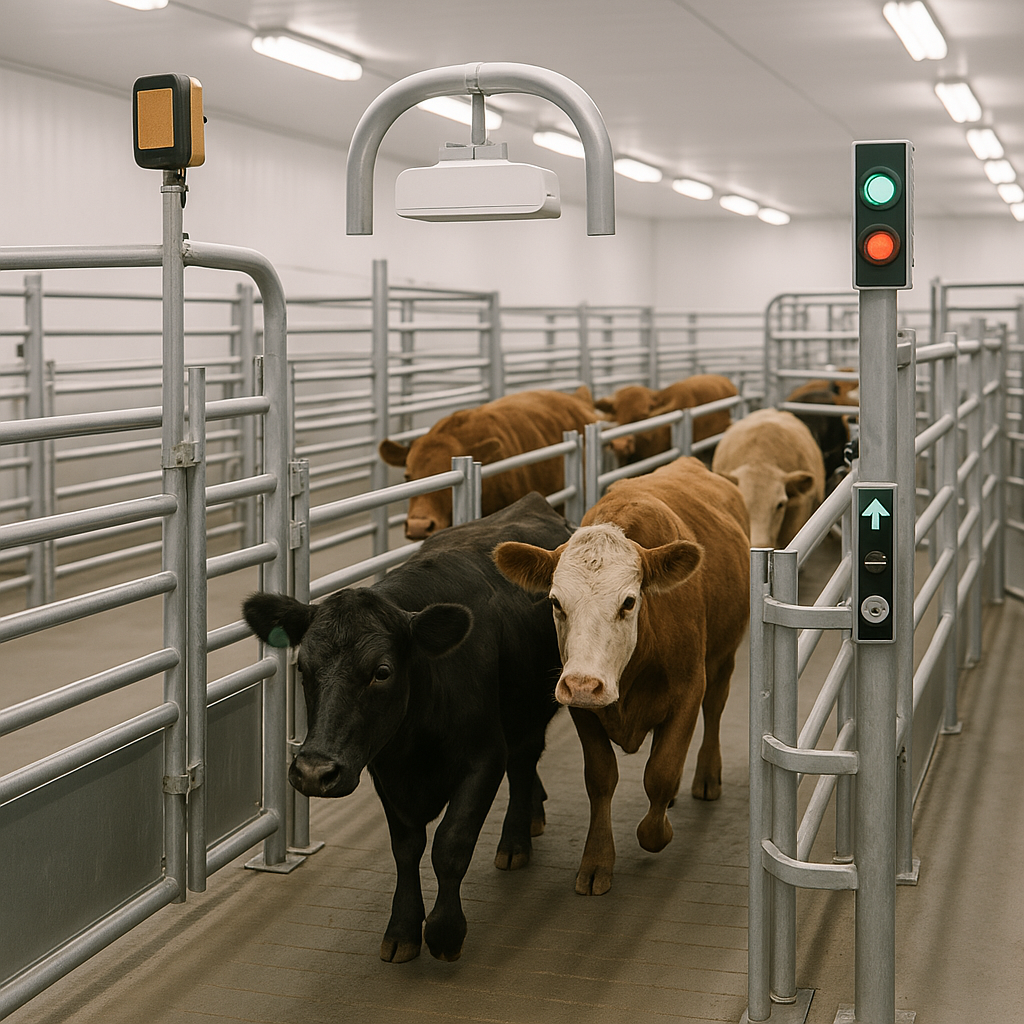
Meta Title: Automated Sorting Pens: How Robotics Are Making Livestock Handling Safer
Meta Description: Learn how automated sorting pens and livestock robotics are reducing injuries, improving animal welfare, and transforming the future of ranching.
Introduction
Livestock handling is undergoing a high-tech revolution. Automated sorting pens, equipped with sensors and robotics, are streamlining operations while making ranching safer for both handlers and animals. In this article, we explore how these systems work, the technology behind them, and the real-world impact they’re having across the livestock industry.
What Are Automated Sorting Pens?
Automated sorting pens are advanced livestock handling systems that use robotics, sensors, and data analytics to sort animals based on weight, health status, behavior, or age. Instead of relying on physical labor to sort cattle or swine, these systems utilize RFID tags, motion sensors, and automated gates to make data-driven decisions in real time.
Animals move through a system of scanning stations and hydraulic gates that open or close based on software analysis. Common across cattle, swine, and sheep operations, these systems are reshaping livestock management worldwide.
The Technology Behind Robotic Livestock Handling
Modern sorting systems rely on an integrated set of technologies:
- RFID/EID Tags: Every animal carries a tag that contains a unique digital ID for individual tracking.
- Vision and Motion Sensors: These detect weight, movement, and potential health issues like limping.
- Automated Hydraulic or Pneumatic Gates: These physically direct animals into the correct pen based on live data.
- Machine Learning Algorithms: Over time, the system learns and adapts to optimize handling and detect anomalies.
Suppliers like Gallagher, Allflex, and VES-Artex provide systems that integrate with herd management software and IoT platforms.
Safety Benefits for Workers and Animals
For Handlers
Manual livestock handling poses serious injury risks—from kicks and trampling to disease transmission. Automated systems reduce the need for direct contact, significantly lowering the risk of accidents and health hazards for ranch workers.
Safety Spotlight: Studies show a 30–50% reduction in animal stress with robotic systems (Grandin, 2021).
For Animals
Consistent, calm movement through automated systems minimizes stress. According to livestock handling expert Dr. Temple Grandin (2021), robotic sorting systems reduce stress indicators in cattle and pigs by 30–50% compared to traditional methods.
Less stress also results in better meat quality, reduced aggression, and lower mortality during transport or processing.
Economic Advantages of Automation in Livestock Handling
Robotic sorting pens aren’t just safer—they’re smarter investments. Key benefits include:
- Increased Efficiency: Some systems sort hundreds of animals per hour.
- Labor Reduction: Fewer workers are needed, and those present face fewer hazards.
- Fewer Errors: Real-time weight tracking and ID scans ensure more accurate decisions.
- Faster ROI: According to AgFunder News (2022), systems often pay for themselves in 1–3 years, depending on operation size.
ROI Fact: Most systems recover costs within 1–3 years through reduced labor and improved efficiency (AgFunder, 2022).
Real-World Case Studies in Robotic Cattle Sorting
A 2023 Australian feedlot using Gallagher’s robotic pens reported a 40% increase in throughput and significantly fewer handler injuries. In swine facilities across the U.S., companies like Topigs Norsvin use similar systems to sort pigs by weight and destination automatically.
In the dairy industry, Lely’s robotic gate systems are integrated with milking and feeding technologies, further minimizing labor demands while improving animal monitoring.
A Safer Future for Livestock Management
Automated sorting pens are helping transform the agricultural industry—offering a better, safer, and more efficient way to manage livestock. By blending animal welfare with smart technology, these systems are proving that innovation can coexist with tradition in the most demanding environments.
As labor shortages continue and welfare standards rise, robotics aren’t just a convenience—they’re becoming a necessity for the future of responsible ranching.
References
- Grandin, T. (2021). Designing for Animal Welfare and Safety. Livestock Science.
- AgFunder News. (2022). The Rise of Livestock Robotics.
- Gallagher Animal Management. Smart Sorting Systems Overview & Case Studies.
- Beef Central. (2023). Automated Sorting Boosts Safety in Feedlots.
- National Hog Farmer. (2022). Automation in Swine Facilities.
- Lely North America. (2023). Smart Dairy Robotics Overview.
- Allflex/MSD. RFID Monitoring Systems & Animal Health Platforms.

